[ad_1]
Beginners often use only one abdominal and abdominal exercise machine called the “Roman chair,” significantly limiting their capabilities. In the gym, you can perform more than 7 different abdominal movements, which will ensure the most effective pumping.
Benefits of abdominal exercise machines
Exercise machines for abdominal muscles have 4 undeniable advantages:
- Safety when performing movements.
- The ability to exclude other groups, focusing the load on specific muscles (especially the lower back).
- Constant opportunity to increase the load by adding weight to the simulator.
- A variety of possibilities and the most complete pumping, with an emphasis on each muscle.
While regular and complex abdominal movements involve almost all the core muscles and disperse the load, abdominal exercise machines provide all the conditions for a high-quality workout of the abdominal area. Moreover, a wide arsenal of movements allows you to alternate and change exercises, eliminating muscle addiction and stagnation in results.
The only drawback of working in simulators is the need to focus the load on the abdominal muscles. Without this, their effectiveness is significantly reduced. For example, when doing crunches in a machine, it is important to relax your arms and move your stomach.
Top 8 abdominal exercise machines
List of the best abdominal and abdominal exercises on machines that you can
perform in most gyms.
1. Roman chair crunch machine
The most popular, but not the most effective abdominal movement. Uses the upper abs well, but has a significant drawback – increased load on the lower back. To a greater extent, it serves as a warm-up element, to warm up before subsequent and more difficult movements.
Technique:
- Place your hands behind your head, fix your legs and lean back so that there is a right angle between your thigh and body. This is the starting position.
- Tilt your body back 30-35 degrees.
- Without pausing, start twisting forward (try to bend your body and bring your head as close to your legs as possible).
- Take a short pause while exhaling and repeat the movement.

For crunches to be beneficial, focused work with a short amplitude and constant retention of tension in the muscles is important.
2. Bench exercise machine: bent leg raises
The safest lower abdominal machine you can find in the gym. Working on an incline bench allows you to use your abs more effectively, excluding your legs from the work.
Technique:
- Lie down on the bench, fix your body position, and hold on to the handles. Legs are brought together.
- Start raising your legs (with your knees slightly bent) until a right angle is formed between your thigh and body.
- Pause for up to 1 second (with a preliminary exhalation), then slowly return your legs to the starting position.

At the lowest point, it is forbidden to relax your legs; this will relieve tension from the abs.
3. Exercise “corner” while hanging on the horizontal bar
Even though this movement is from Soviet school physical education, it qualitatively loads the abs in a static mode. A good analog of the plank, which is done in the simulator.
Technique:
- Hang from the horizontal bar.
- Bring your legs together and lift them forward so that your body forms an inverted “L” (a right-angle bend at the hip joint). A slight bend in the knees is allowed to reduce the load on the joint.
- Hold this position for as long as possible, remaining suspended without moving.
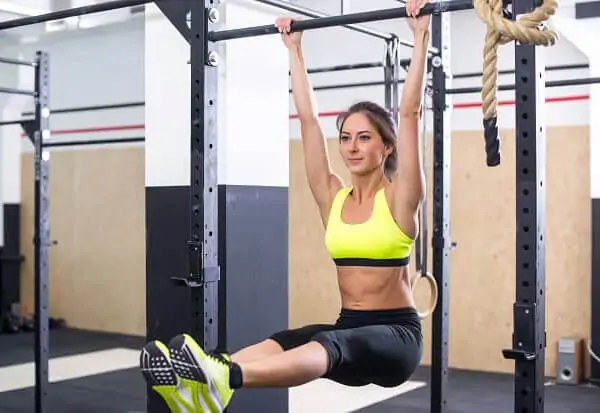
4. Oblique leg raises while hanging on the horizontal bar
A technically complex exercise that consists of modified hanging leg raises and body rotation. It requires considerable physical preparation to perform well but provides the most powerful workout of the oblique abdominal muscles.
Technique:
- Hang on the horizontal bar, hands at shoulder level (any comfortable grip).
- Begin to lift your legs while bending your knee.
- Gradually move your folded legs to the side so that your knees are directed as far to the right or left as possible (depending on the direction of movement).
- Pause until 1.5-2 seconds at the top, then return to the starting position and repeat on the other side.

There is also a more difficult version with a pelvic rotation. In this case, when reaching the top point, the legs are rotated so that the knees are moved to the side and the thigh biceps is directed straight forward (in front of you). This rotation will put even more stress on the oblique muscles.
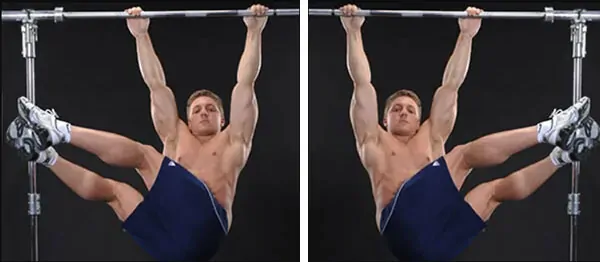
5. Exercise “prayer” in the crossover simulator
The most powerful movement for the ab. Mainly pumps the upper part. Its peculiarity is that the work is performed with great weight. For this purpose, the upper crossover block and the rope handle are used.
Technique:
- Take the handle with both hands and move 1-2 steps away from the top block. Get on your knees and fix your arms so that they are pressed tightly to the body (the hands are at the level of the front delts).
- Start twisting your body, trying to bring your upper body as close to your hips as possible.
- At the bottom point, pause and return to the starting position.
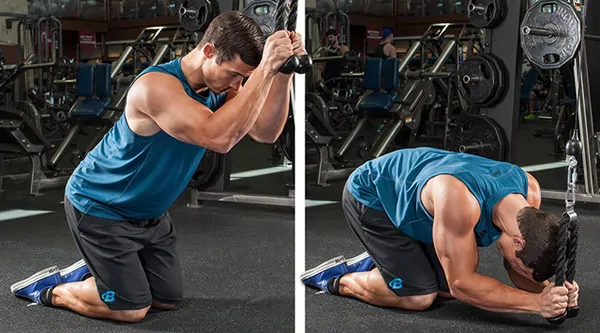
The negative phase of the movement should be slightly slower than the twist itself. It is strictly forbidden to stand up abruptly, succumbing to inertia.
6. “Lumberjack” exercise in the crossover simulator
A powerful movement for the obliques is performed in the upper block of the crossover. It is considered complex, as it involves a large number of muscle fibers.
Technique:
- Approach the crossover, and stand sideways to the upper block. Grasp the handle (D-shaped) with one hand so that it is above your shoulder. Without changing body position
grab the handle with your other hand, this is the starting position. - As you exhale, perform a powerful diagonal movement, trying to bring your hands to your hip (opposite your main hand).
- Return the handle back at a slow pace while inhaling.
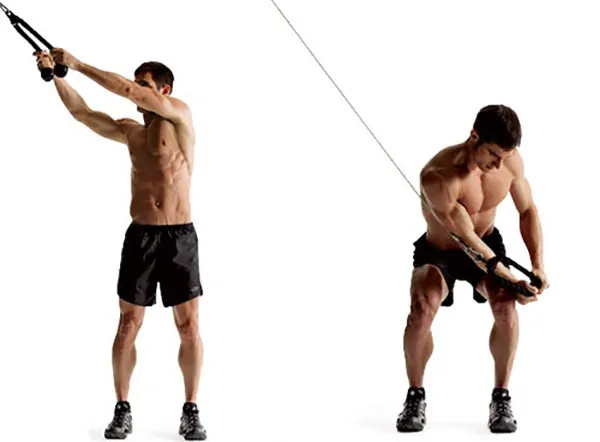
Important so that the body remains fixed when working with the arms and shoulder girdle (avoid turning). This will load the target muscle as much as possible.
7. Crunches in the simulator
Classic crunches, which are performed in the simulator. This option almost completely eliminates the load on the lower back and allows you to work with heavy weights. For rapid progression, it is recommended to do the exercise in the range of 10-15 repetitions with a constant increase in weight (so that the last 2-3 repetitions lead to failure).
Technique:
- Sit in the exercise machine, fix your legs. Place your hands on the handles (the handles themselves may have different designs, although their main task is the same – fixing the shoulder girdle).
- Begin twisting while exhaling powerfully.
- Pause briefly at the bottom and slowly return to the starting position.
At the top point, it is important not to straighten the body completely. Maintain tension in your muscles throughout the entire set.
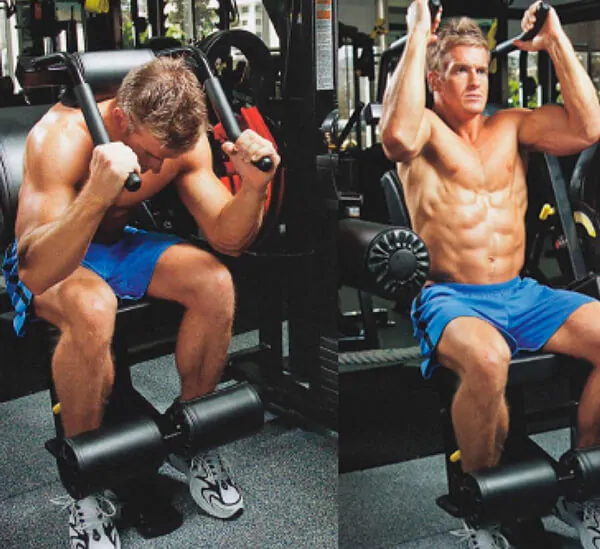
8. Exercise with an abdominal roller machine
Roller is the best home exercise machine for the abs and abdomen. Also often present in gyms. With a fairly simple technique, the gymnastic wheel simultaneously provides not only a powerful contraction but also stretching of the abdominal area.
Technique:
- Get on your knees and grab the handles of the roller skate. In the initial position, there should be a right angle in the knee and hip joints. Hands are perpendicular to the floor.
- Start moving the roller forward as far as possible, stretching your abdominal muscles.
- Pause, then return to the starting position at a slightly faster pace.
When working with a roller it is important to focus the load on the abdominal area and avoid jerking. To additionally work out the oblique muscles, roll the roller not straight in front of you, but with abduction to the sides (alternating).
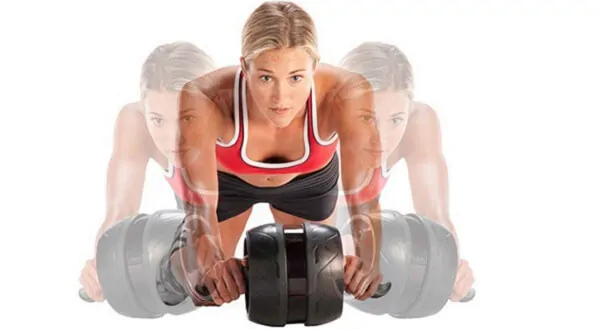
Conclusion
Exercise machines provide an excellent workout for the abdominal muscles. With their help, you can work on every area of the abdominal area for maximum progression. It is important to use all types of exercise equipment to avoid muscle adaptation and addiction.
[ad_2]

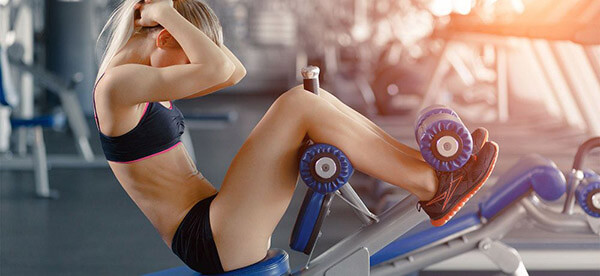
Leave a Comment